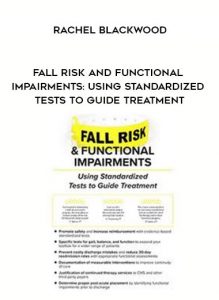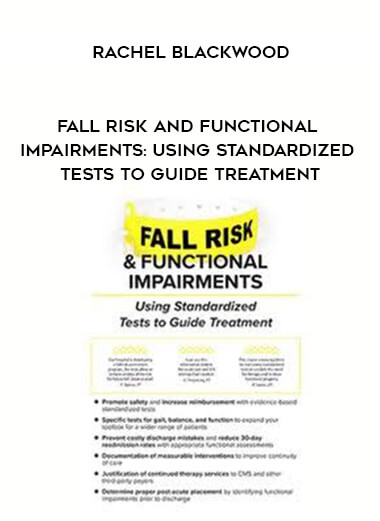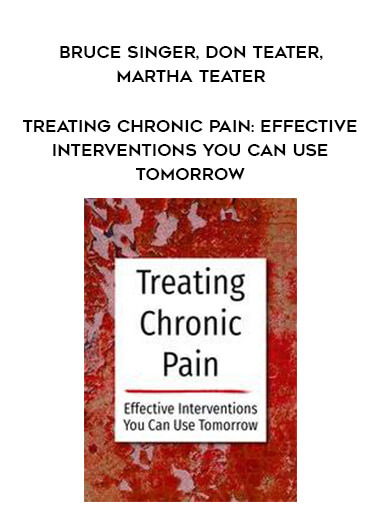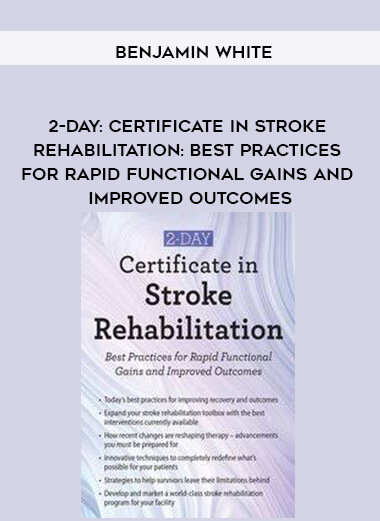
SalePage : Fall Risk and Functional Impairments: Using Standardized Tests to Guide Treatment – Rachel Blackwood
FileType :
FileSize :
Therapists and other healthcare practitioners have an increasingly complex role in discharge planning from acute care as hospital stays become shorter and 30 day readmission rates are more closely scrutinized. It is imperative that acute care therapists not only identify but also be able to quantify functional impairments and fall risk. Standardized testing in hospitals is complicated by the frailty of the patient population, management of multiple lines and medical issues, as well as time constraints.
This course is designed to help healthcare practitioners by familiarizing them with the variety of tests to choose from, and to assist them in making sense of test outcomes. You will learn and practice tests that can be used on patients with high levels of mobility, as well as those tests that are appropriate for the ICU. During this lab-intensive course, you will be introduced to an array of objective measures that can be used to enhance assessments and documentation, to guide treatment, and to aid in discharge planning.
- Examine barriers with using standardized tests and how to avoid them
- Demonstrate evidence based tests that are applicable in the acute care setting
- Compose appropriate documentation with quantifiable, objective measures
- Determine how standardized tests can be used in the ICU and with other medically complex patients
- Discover how using standardized testing can guide discharge planning and reduce the risk of 30 day readmissions
BACKGROUND INFORMATION
- Functional impairments relate to 30 day readmission risk
- Barriers preventing standardized testing in acute care
- Time constraints
- Infection control issues
- Multiple lines/ICU patients
- Unsure which test is most appropriate
- Benefit of adding standardized tests into electronic chart
PSYCHOMETRICS- A REVIEW OF TERMS
- Floor and ceiling effects
- Responsiveness
- Interpreting results
- Translating results into meaningful assessment
FUNCTIONAL IMPAIRMENT TESTS
- 6 clicks- Activity Measure for Post-Acute Care Inpatient Short Form
- Acute Care Index of Function
GAIT: WHEN DOCUMENTING DISTANCE AND LEVEL OF ASSIST ISN’T ENOUGH
- Importance of standardized gait tests
- Gait velocity- a new vital sign?
- Standardized gait tests
- 2, 3, and 6 minute walk tests
- 10 meter/50 foot walk test
- Dynamic Gait Index
- Four Step Square Test
- Gait tests and productivity standards
- Case study and lab ICON—BOTH SIDE BY SIDE
BALANCE TESTS
- Quantifying fall risk
- Standardized balance tests, including those taking LESS than 2 minutes to perform
- BESTest/mini-BESTest
- 360 Turn Test
- Function in Sitting Test
- Fullerton Advance Balance Scale
- Which test is best
- Setting
- Patient frailty
- Time constraints
- Using tests to justify discharge plan
- Rehab
- SNF
- Home health
- Case study and lab ICON—BOTH SIDE BY SIDE
BENEFITS OF ICU STANDARDIZED TESTING
- ICU Specific tests
- ICU mobility scale
- ICU PFIT
- PERME ICU mobility
- Complications
- Frailty
- Managing lines/tubes
- Case study and lab ICON—BOTH SIDE BY SIDE
ADLS AND STANDARDIZED TESTS
- Insight into ability to perform functional tasks
- Incorporating tests into discharge planning
- Case study and lab ICON—BOTH SIDE BY SIDE
CVA SPECIFIC TESTS
- Justifying further therapy
- Review of specific tests
- Action Research Arm Test
- Box and Blocks Test
- Orpington Prognostic Scale
- Postural Assessment Scale for Stroke Patients
- Stroke Rehabilitation Assessment of Movement














Reviews
There are no reviews yet.